Brassicaceae:
Watercress (Nasturtium officinale)
The first Brassicaceae family member we’ll discuss is Watercress, or Nasturtium officinale. This aquatic plant sports small, round leaves arranged alternately along the stem and small, white, four-petaled flowers. I discovered this plant near the Olentangy river, indicating its preference for aquatic habitats.
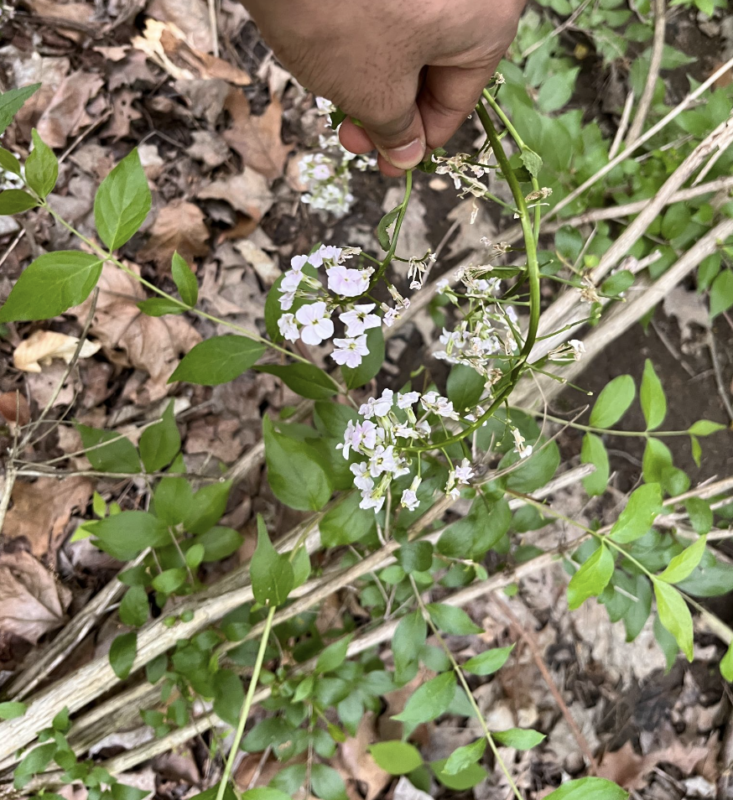
In the Brassicaceae family, the four-petaled flowers in a cross shape are a key feature. Interesting to note, Watercress is not just decorative but also edible and packs quite a nutritional punch, with high amounts of vitamins A and C. (source:https://www.thewatercresscompany.com/nutritional-composition-of-watercress)
Dame’s Rocket (Hesperis matronalis)
Next is Dame’s Rocket, or Hesperis matronalis, another Brassicaceae member. It features lanceolate leaves arranged alternately along the stem, and its flowers are larger and usually purple with four petals. I found this plant throughout the park on the edges of a trail.
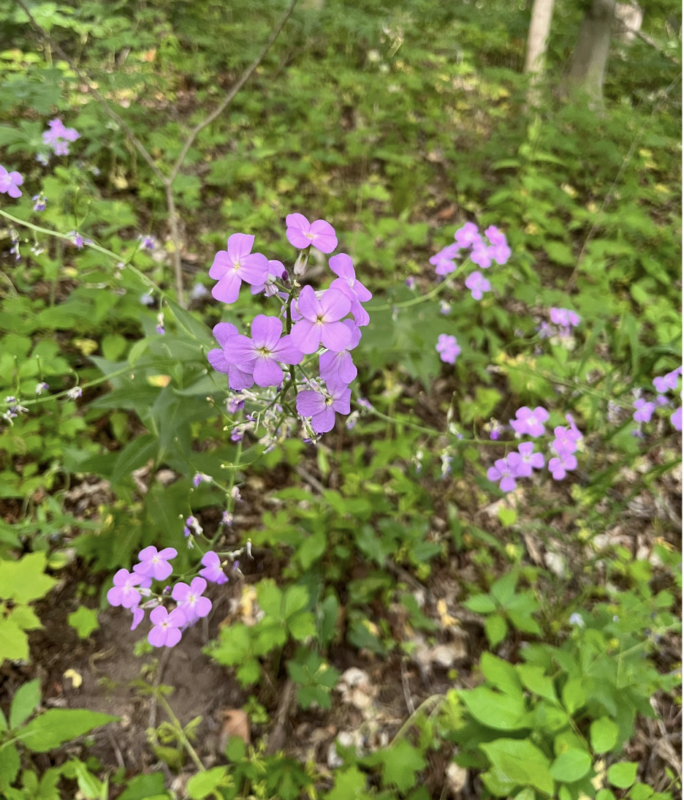
Dame’s Rocket, like other Brassicaceae members, sports four-petaled flowers in a cross shape. One interesting fact is that Dame’s Rocket is actually an invasive species in North America, native to Eurasia. (source: https://bygl.osu.edu/node/1596)
Apiaceae :
Sosnowsky’s hogweed (Heracleum sosnowskyi)
Now, let’s shift our focus to the Apiaceae family with Sosnowsky’s hogweed or Heracleum sosnowskyi. This plant stands out with its broad, deeply incised leaves and large, umbrella-shaped clusters of small white flowers. It was found growing alongside a trail, where it enjoys the sunlight. luckily I did not get any of its sap on my skin as I will discuss shortly.
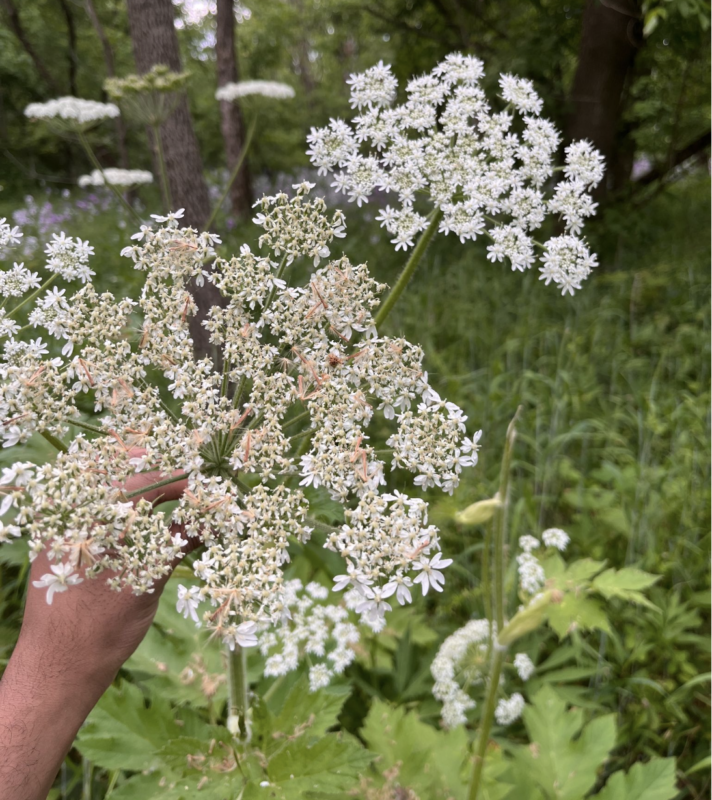
Apiaceae members are recognized by their unique umbrella-shaped flower clusters called an Umbel. An important fact about Sosnowsky’s hogweed is that its sap, upon contact with skin and exposure to sunlight, can cause severe burns. (source: https://pubmed.ncbi.nlm.nih.gov/27755521/)
Golden Alexander (Zizia aurea)
Another Apiaceae representative is Golden Alexander, or Zizia aurea. It features compound leaves divided into three parts and small, yellow flowers clustered into umbels. I discovered this plant among other weeds in a sunny meadow within the park.
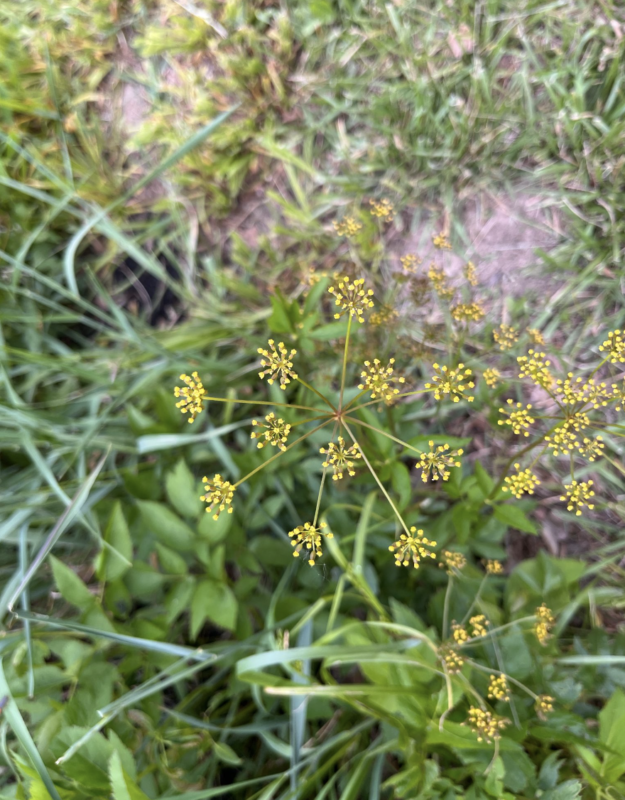
Like other Apiaceae members, the umbrella-shaped flower clusters called an umbel are key to identifying Golden Alexander. It’s fascinating to know that this plant is a host for the Black Swallowtail butterfly’s larvae. (source: https://the-natural-web.org/2012/05/17/golden-alexander-hosts-black-swallowtail-butterflies/)
Asteraceae :
Common dandelion (Taraxacum officinale)
Moving to the Asteraceae family, the Common Dandelion, or Taraxacum officinale, is a familiar sight. It features simple, deeply lobed leaves and a single yellow flower head composed of many tiny flowers. I spotted this ubiquitous plant in a narrow path near the Olatagy river
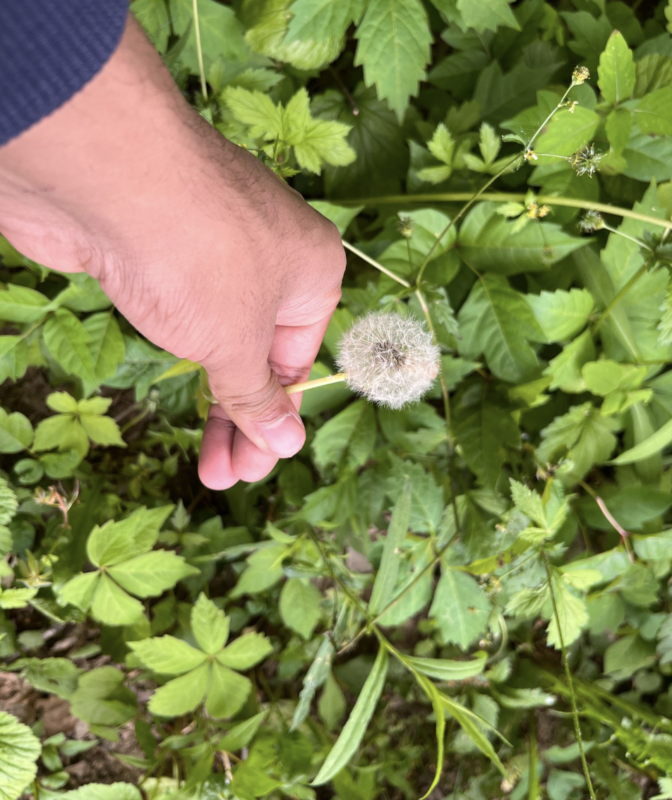
Asteraceae family members are recognized by their composite flowers. An interesting fact about the Common Dandelion is that every part of the plant is edible, and it has been used in traditional medicine for centuries. (source: https://www.wildedible.com/common-dandelion)
Fleabane (Erigeron philadelphicus)
The second Asteraceae plant is the Fleabane, or Erigeron philadelphicus. It sports alternate, narrowly ovate leaves and small, daisy-like flower heads with many small petals. This plant was thriving in a sunny patch alongside the walking trail.
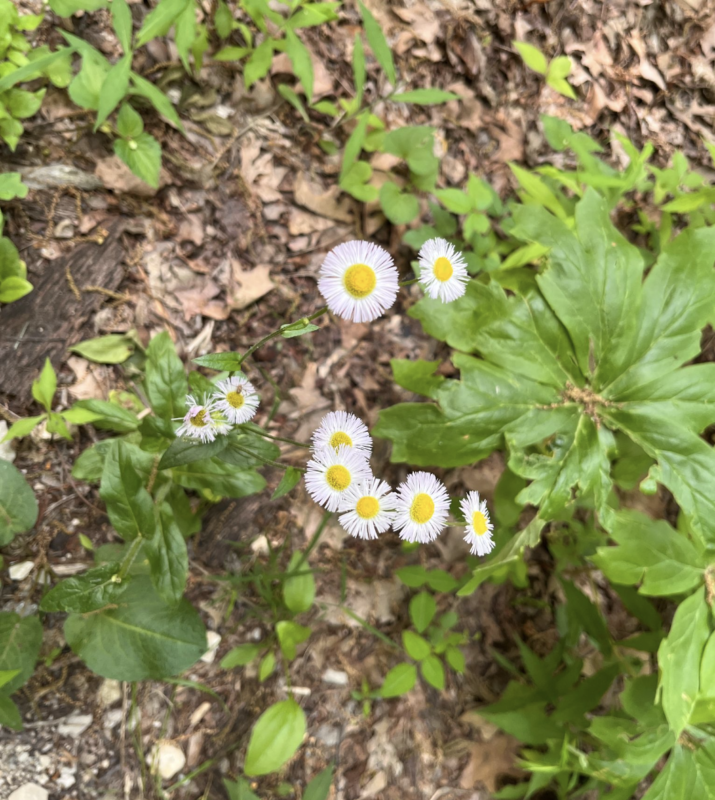
Asteraceae identification features include the composite flower heads, similar to the dandelion. Notably, Fleabane has traditionally been used as a repellent for fleas, hence its common name. (source: https://anitasanchez.com/2014/07/11/daisy-fleabane-does-it-get-rid-of-fleas/)
Rosaceae :
Cinquefoil (Potentilla simplex)
We now come to the Rosaceae family, starting with the Cinquefoil, or Potentilla simplex. This plant is identified by its five-part palmate leaves and five-petaled yellow flowers. I found it growing near other weeds in an open field, a favorite habitat of many Rosaceae family members.

Rosaceae plants often have five petals and numerous stamens, as seen in Cinquefoil. A fun fact about this plant is that it’s often used in herbal medicine for its purported anti-inflammatory properties. (source: https://pubmed.ncbi.nlm.nih.gov/28400287/)
Multiflora Rosa (Rosa multiflora)
Our plant journey ends with the Multiflora Rosa, or Rosa multiflora, another Rosaceae member. It has compound leaves with sharp thorns on the stems and clusters of small, white, five-petaled flowers. I found this robust shrub Throughout the trail where it poked me its thorns a few times.
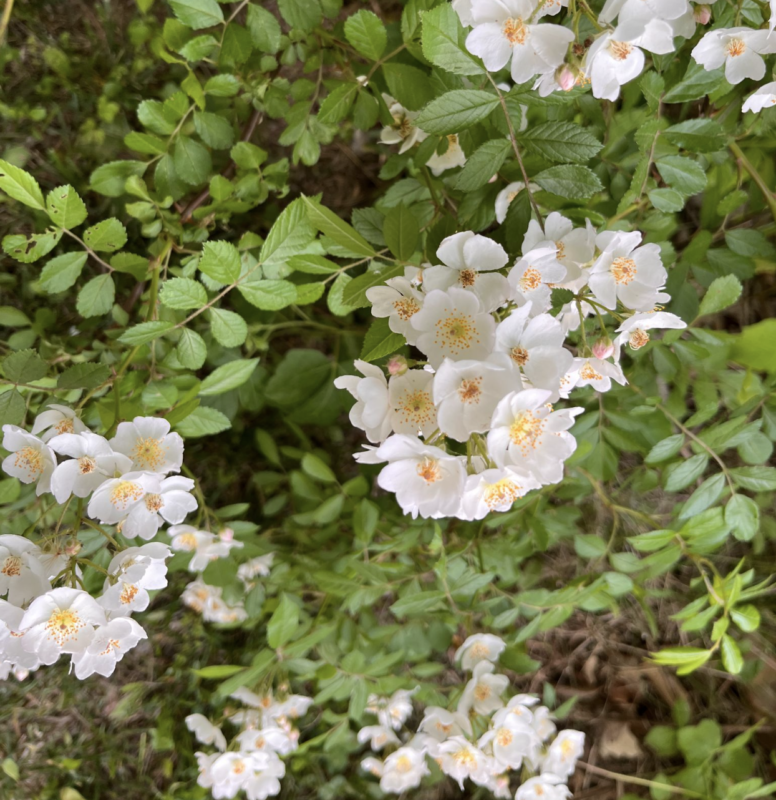
The five-petaled flowers and compound leaves with stipules are classic characteristics of the Rosaceae family. However, it’s worth noting that Multiflora Rosa, although beautiful, is considered an invasive species in many parts of the U.S. (source: https://www.ecolandscaping.org/07/landscape-challenges/invasive-plants/multiflora-rose-an-exotic-invasive-plant-fact-sheet/)
